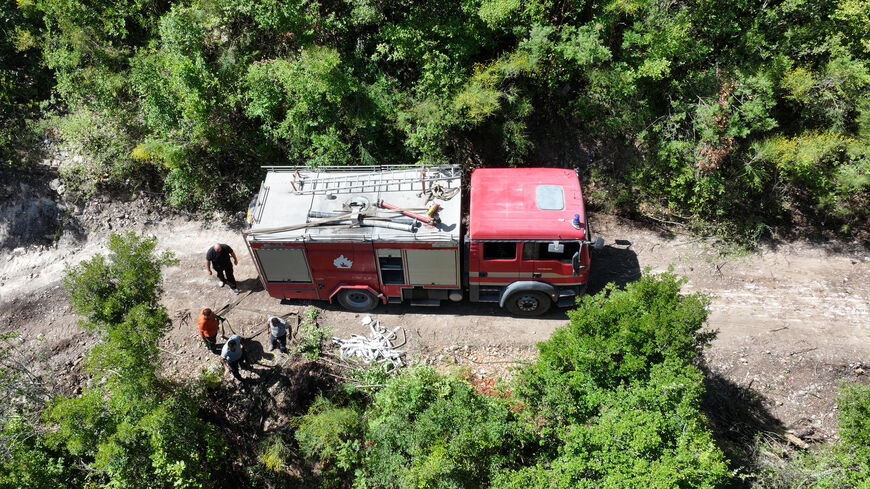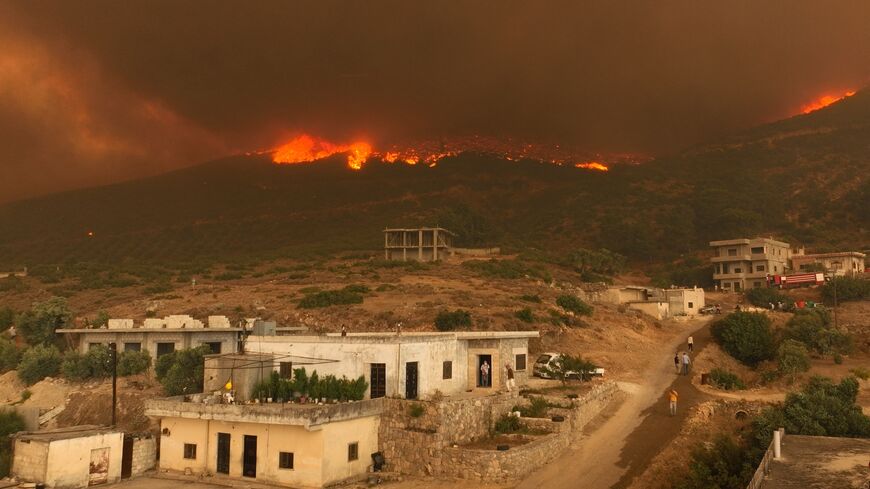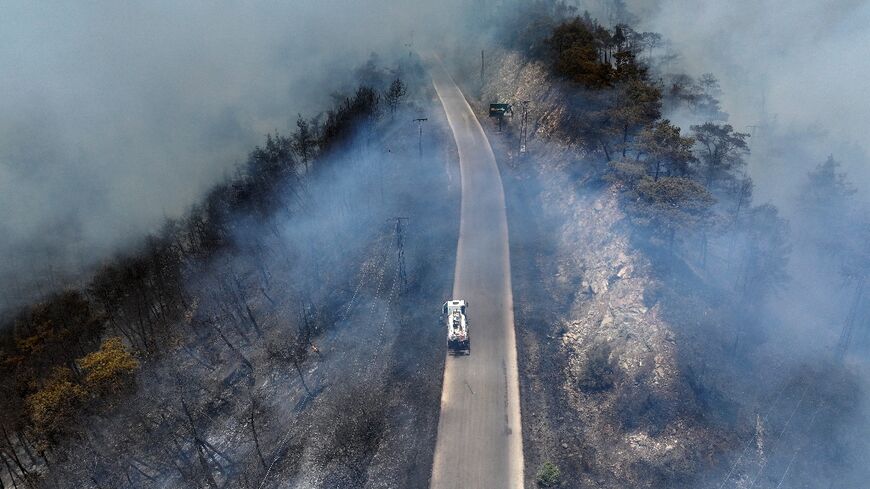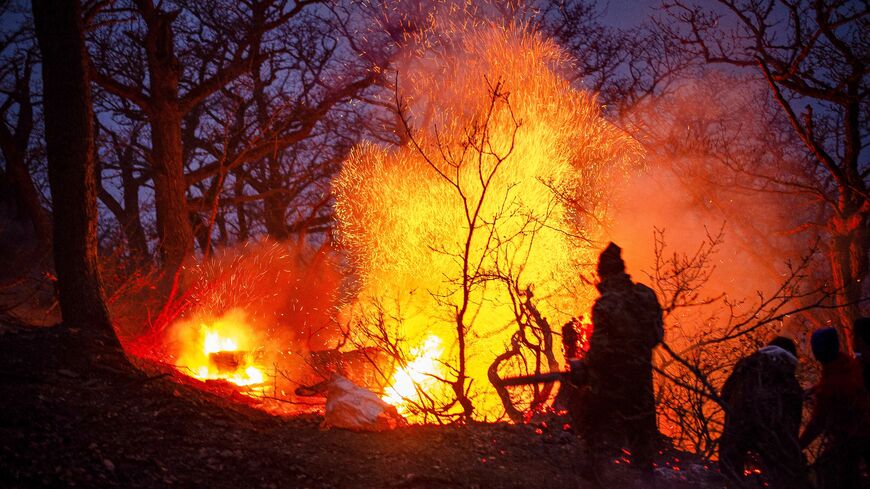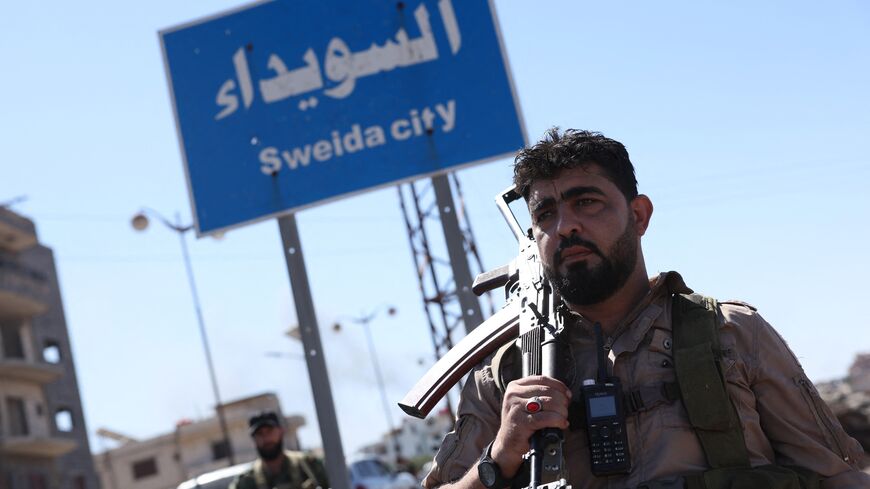As wildfires ravage Latakia, Syria seeks EU support: What to know
Syria has been combating massive wildfires in coastal Latakia province for six days.
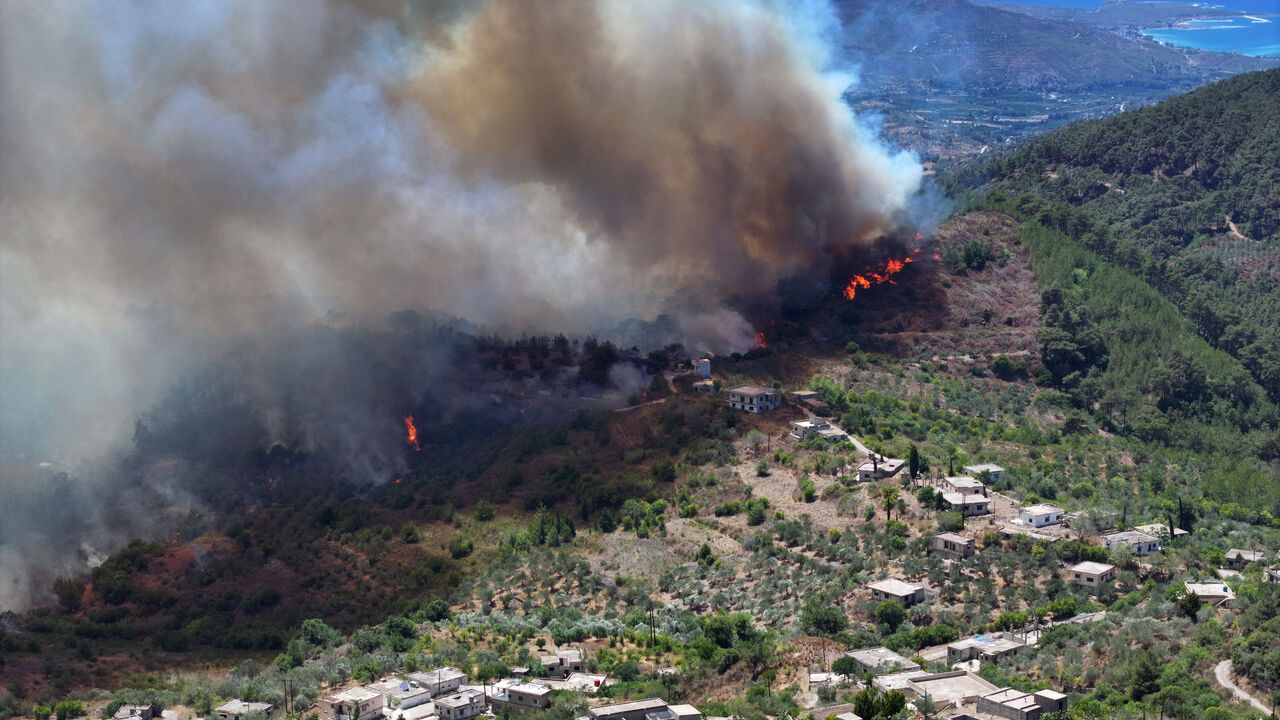
BEIRUT — Syria’s authorities appealed Tuesday to the European Union for support in battling massive wildfires that have been engulfing the country’s northwestern coastal region for the sixth consecutive day.
Minister of Emergency and Disaster Management Raed Saleh wrote in a post on X that authorities reached out to the EU for assistance as Syrian civil defense teams continue to extinguish the fires in Latakia province.
On July 3, a series of devastating wildfires spread across forests and farmland near the Turkish border. The blazes, fueled by strong winds, scorching temperatures and extreme drought, have since burned 14,000 hectares and forced hundreds of people to evacuate.
Despite the devastation, no casualties have been reported so far.
The fires continued to advance, reaching parts of Idlib, Homs and Tartous provinces, according to the Syrian civil defense. The firefighters face significant challenges including rugged terrain, strong winds and the presence of mines and unexploded ordnance from Syria’s 14-year civil war.
UN, neighboring countries dispatch firefighters
Firefighting crews from Turkey and Jordan have joined the civil defense operations with helicopter support from Syria, Turkey, Jordan and Lebanon, Saleh said in his Tuesday statement.
لليوم السادس على التوالي، فرق الدفاع المدني السوري تواصل عمليات إخماد الحرائق المندلعة في غابات الفرنلق بريف #اللاذقية الشمالي.#سانا #سوريا pic.twitter.com/BqrX8FCGDC
— الوكالة العربية السورية للأنباء - سانا (@Sana__gov) July 8, 2025
“Sixteen aircraft are currently participating in the operations, and the number is expected to reach 20 in the coming hours,” he noted, adding that Cyprus is expected to send aircraft later on Tuesday.
The Lebanese military said Monday it dispatched two firefighting helicopters to Syria to assist in combating the wildfires in coordination with the Syrian authorities.
Jordan also sent reinforcements to Syria on Sunday, including two Black Hawk helicopters equipped with advanced firefighting systems and specialized crews to help combat the fires.
Jordanian firefighters went to Syria earlier on Sunday to support their Syrian counterparts, joining Turkish civil defense workers and fire engines. Turkey is battling its own wildfires in the south and west.
Humanitarian, environmental repercussions
As Syria appeals for assistance in battling the blazes, the United Nations said Sunday that its teams were on the ground on the Syrian coast to assess the damage and humanitarian needs.
“UN teams are on the ground conducting urgent assessments to determine the scale of the disaster and to identify the most immediate humanitarian needs,” UN Resident and Humanitarian Coordinator in Syria Adam Abdelmoula said in a statement.
“The UN reiterates its solidarity with the people of Syria at this critical moment and stands ready to work alongside all stakeholders to ensure that no one is left behind in the response and recovery efforts,” he added.
According to the SARD nongovernmental organization, which operates in Syria and Turkey, the fires have affected nearly 5,000 people, including more than 1,100 who were forced to evacuate their homes in dozens of villages across Latakia.
استمرار مشاركة #الجيش_اللبناني في اخماد حرائق في ريف #اللاذقية - #سوريا pic.twitter.com/DOU2hDrjQT
— Al Modon - المدن (@almodononline) July 8, 2025
The group also said in a report on Monday that nearly 100 square kilometers (40 square miles) of woodland, or 3% of Syria’s total forest cover, were burned. Around 5,270 square kilometers (about 2,000 square miles) of the country is forested, according to 2023 data from the Syrian government.
Syrian authorities have called the fires catastrophic. Saleh told reporters on Sunday that the country was facing a “real environmental disaster.”
There is growing fear of the fires spreading to al-Frunloq natural reserve, one of the largest forests in Syria located in Latakia’s al-Bayer region. In a post on X on Tuesday, the Syrian civil defense said its teams were deploying intense efforts to protect the reserve.
Climate change is seen as a major factor in the massive wildfires in Syria. In June, Haya Abu Assaf, assistant representative of the UN Food and Agriculture Organization in Syria, told Agence France-Presse that Syria was experiencing its harshest climate conditions in nearly 60 years, marked by five years of low precipitation, according to the UN humanitarian agency OCHA.
Since the beginning of July, the Syrian civil defense responded to 334 fires across Syria, most of them in Latakia followed by Tartous with 26 fires, Saleh wrote on X Monday.

